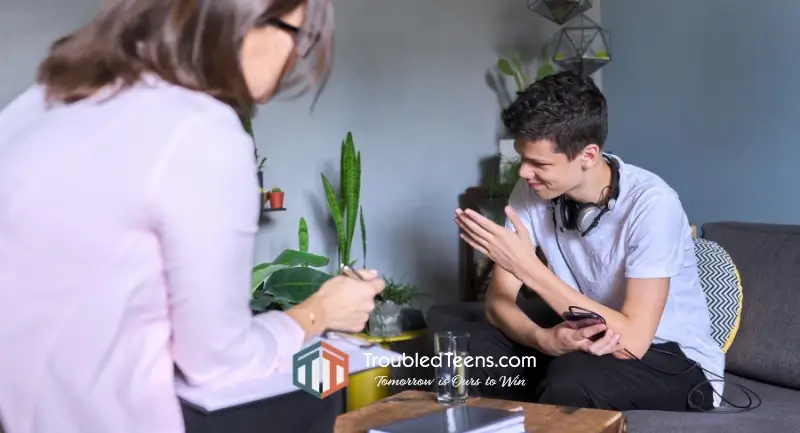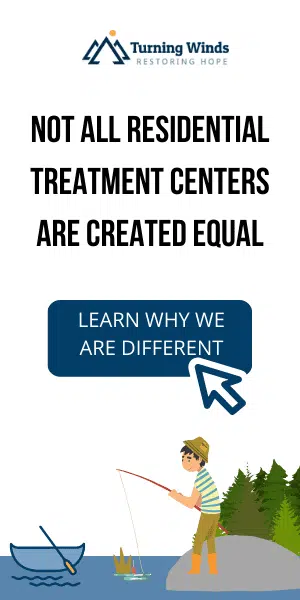Updated on July 21, 2023
86% of school-aged kids reported worrying at least some of the time, according to a survey from Nemours KidsHealth. The rising levels of violence, sadness, and suicide risk, and mental health challenges than ever before particularly among teen girls, as reported by CNN
Introduction: The History of Reform Schools
One of the first reform schools for so-called “delinquent” children, the Philadelphia House of Refuge, opened 200 years ago in Pennsylvania. Later renamed the Glen Mills School, this reformatory school for boys remained in operation until March 25, 2019.
On that day, the Pennsylvania Department of Human Services ordered all boys removed from the school as well as the closing of Glen Mills School.

An investigation by Philadelphia newspaper reporters discovered the school had not been complying with internal and state regulations for decades.
Documentation provided by journalists to the PDH proved that abuse and neglect were consistently covered up and that school staff knew about the rampant physical and sexual abuse.
In fact, the investigative report described the horrors occurring within the school as an “open secret”.
Currently, there is a mass tort case ongoing against Glen Mills School. Over 700 former residents of the reform school have filed lawsuits demanding compensation for the years of abuse they suffered while living at the school.
State Closes Reform Schools
Fortunately, Glen Mills School was one of the few remaining teen reform schools still operating in the U.S. today.
Since the 1990s, states have been rapidly moving away from the prison-like atmosphere of reformatories to adopt more therapeutic environments in which teen behavioral issues can be empathetically addressed.
Therapeutic boarding schools and residential treatment centers for troubled teens have now replaced outdated teen reform schools.
The History of Reformatory Schools for "Bad Kids"
Up until the early 19th century, children who committed crimes were sent to adult penitentiaries. The idea that children were just “little adults” remained pervasive in society until child advocates began speaking out about the horrors of penitentiary life.
Supported by the ideas of early developmental psychologists John Watson and Jean-Jacques Rousseau, advocates believed that children could not be reformed by living with adult criminals.
Instead, children with mental health or behavioral issues would fare better in reformatories meant for children and teens only.
By the beginning of the 20th century, a new group of activists deemed the child savers rightly claimed that overcrowded reformatories were no better than adult penitentiaries.
These child savers were ultimately responsible for enlisting state governments to develop the juvenile court system that we have today. But what they hoped this new juvenile court system would accomplish merely evolved as a more widely accepted form of unjust and cruel punishment for children who came from poor, uneducated backgrounds.
Reformatories and the Criminal Justice System
After World War II, the juvenile justice system until the beginning of the 21st century routinely sent boys to reformatories for committing crimes as minor as stealing an apple from a street vendor.
Reform schools for girls existed but predominately operated in urban areas like Chicago or New York City. The conformist, conservative ideology embraced by society in the 1950s and 1960s had no sympathy or tolerance for troubled teenagers, especially poor children.
One insidious aspect of the antiquated reform school structure involved the ability of wealthier parents to persuade juvenile court judges that their children weren’t “bad juvenile offenders” but just children that needed more discipline at home.
Consequently, corruption in the juvenile justice system further prevented the ability of troubled kids to get the kind of professional help they so desperately needed.
What did “reforming” children mean to society before the 1990s? The dictionary definition of reform is “to improve something or someone by correcting or removing faults, bad habits or problems”.
How are today's troubled teen programs different than reform schools?
Is reform school the same as therapeutic boarding school?
No, reputable therapeutic boarding schools do not use draconian behavioral modification tactics to correct teenagers’ bad behavior instead they provide the necessary support and therapies to help students with emotional, behavioral, and mental health issues cope and heal.
How are residential treatment centers similar to reform schools?
There are many differences between residential treatment and reform schools in the US.
Residential treatment centers are clinical facilities with 24/7 supervision by medical practitioners and specialize in providing a therapeutic environment for children and families, while reform schools do not.
Residential treatment for teens offers behavioral health services including multiple therapies and treatments for teens diagnosed with anxiety and depression, attention deficit disorder (ADD) and attention deficit hyperactivity disorder (ADHD), co-occurring and dual-diagnosis disorders, eating disorders (mild to moderate); obsessive-compulsive disorder, and oppositional defiance disorder. Reform schools focus on “reforming bad behavior”.
Lastly, in residential treatment centers, children are helped by medical professionals: clinicians, psychologists, therapists, and counselors. In contrast, at reform schools, they may not be getting help from people with these backgrounds.
Religious leaders held great authority in the 19th and 20th centuries and told their congregations that “bad” children could only be reformed through discipline, hard work, praying, and living in rigorously controlled environments.
In other words, “spare the rod, spoil the child” became the mantra of ministers, police officers, and juvenile court judges when determining the fate of a behaviorally troubled child.
Outdated Approaches and Negative Impact of Reformatory Schools
We know now that this type of “therapy” simply does not work. Children with emotional and mental issues need professional, caring help from people who are experienced and trained to diagnose and treat troubled youth.
Thousands of studies investigating the efficacy of teen reform schools have proved that children who spent time in a reform school like Glen Mills grow into adults who suffer from post-traumatic stress disorder (PTSD), severe mental illness, substance addiction, and lengthy criminal histories.
Today, we rarely hear the term “reform school”. In some cases, a private organization may offer different types of reformatory care (usually a government correctional institution) for adolescents, but this is becoming increasingly rare.
The Effect of Reform School

Redefining Teen Rehabilitation: Why Therapeutic Boarding Schools and Residential Treatment Centers are the New Norm
Instead, reform schools have been replaced by therapeutic boarding schools or residential treatment centers (RTCs) providing exceptional, empathetic treatment for boys and girls with developmental, emotional, and mental health problems. Instead of punishing a child’s behavior, RTCs treat the child by addressing the root cause of their distress.
Revolutionizing Teen Rehabilitation: The Unparalleled Advantages of Therapeutic Boarding Schools and Residential Treatment Centers
Can Reform Schools Help Troubled teens?
Say No to Reform Schools and Yes to Residential Treatment Centers for Teens
A residential treatment center (RTC) provides 24/7 supervision and a structured environment for children with mental health and behavioral issues. However, residential treatment centers are nothing like institutional reform schools.
Instead, teens have their own bedrooms, are free to move around in the center, and participate in numerous recreational and social activities.
They have regularly scheduled individual and group therapy sessions, psychological counseling, family therapy sessions with parents via Zoom or video conference and attend accredited school programs so they don’t fall behind at their public school.
Depending on how well a child responds to treatment at an RTC, they may remain in the center for several months but typically, no more than one year.
Demystifying Residential Treatment: Unveiling the Truth About Therapeutic Boarding Schools and Residential Treatment Centers
Residential treatment centers and therapeutic boarding schools are often shrouded in misconceptions, leading to unnecessary worries for parents. Let’s debunk some of these myths:
- They are too restrictive: These facilities actually provide a balanced structure that promotes discipline without stifling individuality. They offer a variety of activities and therapies that help teens explore their interests and talents.
- Only ‘bad kids’ go there: This stereotype is harmful and inaccurate. Teens who enroll in these programs are usually dealing with complex emotional or mental health issues that require professional intervention, not punishment.
- Teens are removed from ‘real life’: While these centers provide a safe, therapeutic environment, they also prepare teens for life beyond treatment by teaching them essential life skills and coping strategies source.
- Academic achievement is sidelined: On the contrary, most of these institutions prioritize education alongside therapy. They provide personalized academic plans to help students keep up with their schoolwork source.
- Only affluent families can afford them: While costs can vary, many facilities offer a range of payment options, scholarships, or work with insurance companies to make care more accessible.
Understanding the facts about these treatment options can help parents make informed decisions about their child’s mental health care. They are not a last resort but a proactive step towards ensuring a healthier, happier future for teens.
For more information about treatment centers and schools for troubled teens, contact us today to speak to a family advisor who can help you get your child the help they need.



















